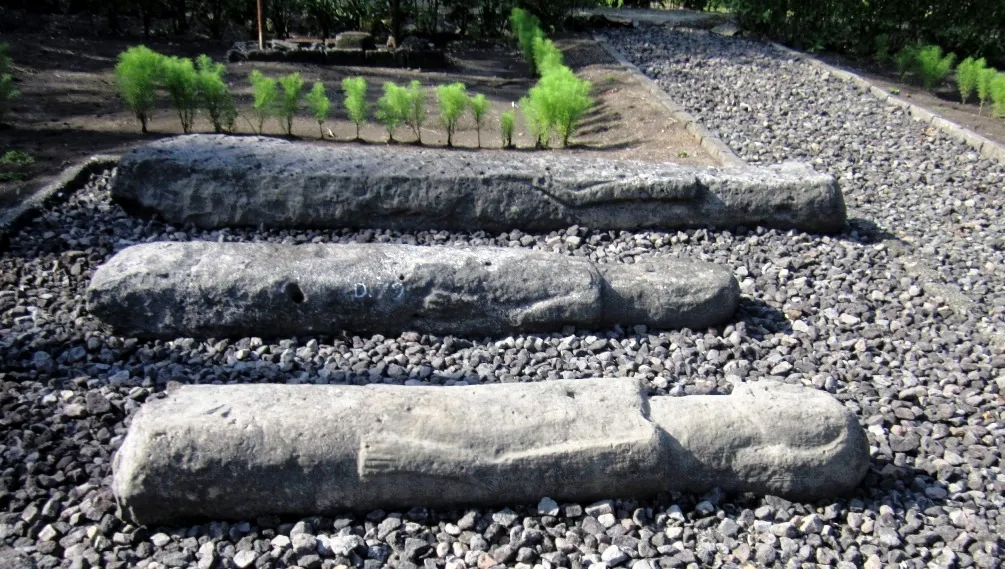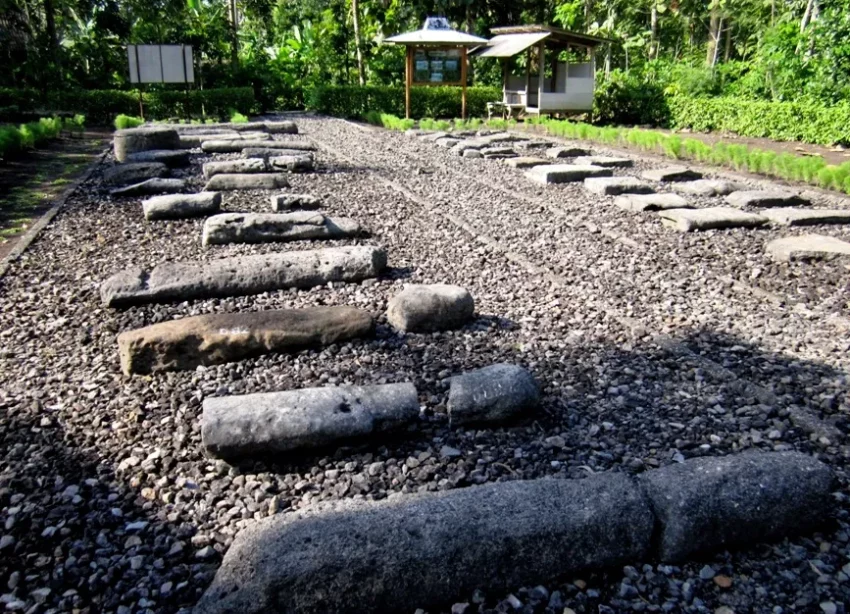Exploring the Bleberan Megalithic Site: A Window into Ancient Javanese Culture
The Bleberan Site in Playen, Gunungkidul, offers a unique look at Indonesia’s ancient megalithic culture. Located in Bleberan Hamlet, this archaeological site spans over 1,146 square meters. It’s a treasure trove of megalithic artifacts, many of which belong to an ancient community known as the Oya River culture.
Get your dose of History via Email
A Collection of Megalithic Treasures
The Bleberan site hosts 57 distinct relics, all carefully placed within the shelter for preservation. The collection includes various types of megaliths, such as menhirs, stone graves, and kenong stones. Menhirs, large stone pillars associated with ancient rituals, are particularly prominent here. Some menhirs have even been carved into statues, adding an artistic layer to their historical significance. The site also features parts of ancient stone graves, including sarcophagus lids and grave markers.
These artifacts were carefully gathered from the surrounding areas of Playen, which have a rich megalithic heritage. Though some of these objects date back thousands of years, they still retain a powerful sense of mystery and reverence.

Connection to the Oya River Culture
The artifacts at Bleberan are not isolated finds; they belong to a broader cultural tradition known as the Oya River culture. This term is used in Indonesian archaeology to describe the ancient communities that once thrived along the Oya River. These communities left behind a legacy of stone monuments, suggesting they practiced ritual burials and had complex spiritual beliefs.
Artifacts similar to those at Bleberan have also been found at the Sokoliman site in the nearby Karangmojo District. Together, these sites help archaeologists piece together the history and culture of the Oya River people.
A Site of Historical and Cultural Significance
In addition to its archaeological importance, the Bleberan site is close to popular tourist spots like Sri Gethuk Waterfall. This proximity to tourist attractions makes Bleberan accessible to visitors who might otherwise overlook such a quiet but fascinating place. The site acts as both a historical record and a point of cultural pride, preserving artifacts that reveal how early Javanese societies lived, honored their dead, and expressed their beliefs.
Preserving the Past for Future Generations
The preservation efforts at Bleberan allow us to glimpse into Indonesia’s ancient past. As archaeologists continue to study these artifacts, they uncover more about the lives and beliefs of the Oya River culture. Sites like Bleberan remind us of the richness of human history and the importance of protecting it.
The Bleberan site stands as a testament to ancient Indonesia—a place where stones speak of forgotten rituals and silent histories.
Sources:

